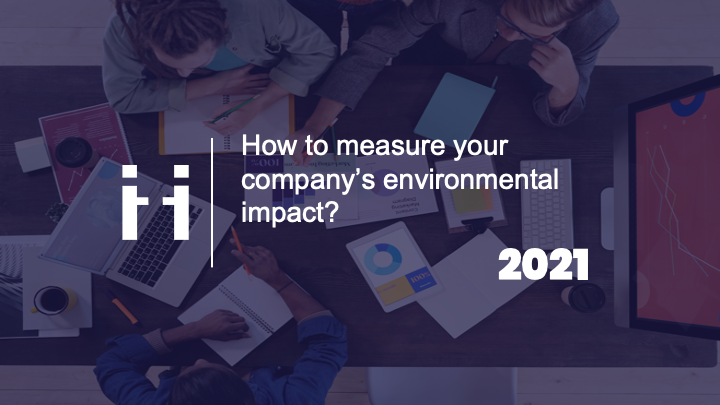
Share this article
Share this article
The first rule of sustainability is to align with natural forces, or at least not try to defy them.
Paul Hawken Tweet
Environmental impact refers to any change in the environment, positive or negative, that is a result of a company’s products, activities, or services. It deals with the effects of business on the environment. Companies must measure their environmental impact to minimize potential negative impacts that could alter the ecological balance.
Environmental assessments are a way of ensuring that environmental consequences are considered before decisions are made. Environmental evaluations look into the effects of certain economic initiatives like the construction of a dam or an airport, which could have a big influence on the environment. For example, the use of fossil fuels to generate electricity in large-scale power projects has not only had adverse environmental effects, but the reduction in air quality has had harmful effects on human and public health. Environmental risk assessments could help avoid such negative consequences.
The Environmental Impact Assessment (EIA Directive 2011/92/EU) establishes the conditions under which a project would need to conduct an environmental assessment and the procedure to do so in the case of individual projects. The Strategic Environmental Assessment (SEA Directive 2001/42/EC) governs the environmental impact assessment procedure for public plans and programs.
Environmental impact assessments are only required for projects that may have substantial environmental consequences, guaranteeing the most efficient use of public and private resources. Various national legislations specify the conditions under which environmental evaluations must be carried out. For example, in the United States, the National Environmental Policy Act (NEPA) requires federal agencies to examine the environmental effects of proposed actions before making decisions.

Environmental impact assessments typically include the following steps:
i. screening processes to identify projects that require environmental impact assessments,
ii. scoping, which is the identification of key issues that will be addressed in the environmental assessment,
iii. impact assessment and evaluation,
iv. stakeholder consultation, and
v. analyzing proposed alternatives and mitigation measures.
The decision-making authority will examine the Environmental Impact statement and determine if the project can proceed.
Environmental impact assessments can be classified on the basis of their scopes as i. strategic, ii. regional, iii. sectoral and iv. Project-level environmental impact assessments.
Strategic environmental impact assessments look at how policies, plans, and programs affect the environment. Environmental factors are incorporated into higher levels of decision-making through strategic impact assessments.
Environmental factors are incorporated into the development planning for a geographic region within a country through regional impact assessments.
Environmental issues relating to the development of individual sectors are addressed in sectoral impact assessments.
Impact evaluations at the project level look into the environmental consequences of specific projects.
Humans are inextricably linked to their surroundings. All human development will almost certainly have an impact on the environment, and vice versa. Because of the complicated interaction that exists between humans and their environment, it is critical to forecast the environmental consequences of planned activities prior to putting them into action.

A sustainability report reveals the company’s Environmental, Social, and Governance (ESG) objectives and progress toward attaining these objectives. It’s a corporate sustainability tool that allows businesses to showcase their social and environmental impact. The report addresses information that is relevant to the stakeholders of the company, rather than just the shareholders.

Sustainability reporting frameworks assist firms in translating theoretical concepts into practical activities by disclosing both good and negative impacts on the environment, society, and economy.
At this time, there is no clear sustainability reporting standard. At the same time, a number of different national and international standards are being developed. Furthermore, some reporting systems are limited to specific industries, while others are more inclusive. There are a variety of sustainability frameworks and standards available; firms must determine which framework is best for them and then implement that standard.
The UN Sustainable Development Goals (SDGs) provide a roadmap for achieving a better and more sustainable future. The UN SDG framework’s goals, on the other hand, are relatively broad and lack clear reporting metrics and standards. The major frameworks for reporting on sustainability are listed below.
1. Global Reporting Initiative (GRI)
GRI is an independent organization that has established and widely acknowledged sustainability standards since 1997. GRI assists businesses in accepting responsibility for their influence on the impact on people and the planet. The GRI standards are intended to be generally applicable to all enterprises, large and small, all over the world.
2. International Organization for Standardization (ISO)
ISO is a non-governmental organization (NGO) with 164 national bodies as members. ISO 14001 is a well-known standard that establishes requirements for an environmental impact management system.
3. Sustainability Accounting Standards Board (SASB)
SASB is a non-profit organization that strives to promote sustainability information standards for investors. Its goal is to collect data on the financial impact of sustainability, which is useful for both enterprises and investors.
Companies can report on sustainability by implementing a specialized sustainability reporting framework, tracking key performance indicators (KPIs), and disseminating the results through a sustainability report.
It’s important to remember that high-quality sustainability reports should enable i. business transformation by allowing investment in strategies that improve performance, ii. better sustainability outcomes by focusing managers’ and board members’ attention on sustainability goals, and iii. improve informed decision-making by securing inputs from stakeholders, employees, customers, governments, and a variety of other sources. Companies may also conduct product life cycle assessments to identify the environmental impact of their products.
Companies are under more pressure to publish information on their environmental, societal, and sustainability performance. For example, the EU Directive 2014/95/EU (commonly known as the Non-Financial Reporting Directive) establishes rules for major corporations’ disclosure of sustainability and diversity data. Businesses must transparently monitor, generate, and disseminate such data.
Companies can collect, generate, and measure data relevant to their role to achieving sustainable economic development through corporate sustainability reporting. Companies can track their progress in all areas of sustainable development, such as the environment, social issues, and governance. Companies would be able to measure their performance on carbon dioxide/ greenhouse gas emission reductions, adoption of renewable energy sources and develop an integrated system to achieve sustainable development.

Depending on the scale of the organization, its regions of activity, and the markets in which it operates, sustainability reporting can be categorized into several types. Smaller organizations could build their own reports based on Key Performance Indicators (KPIs) that are relevant to their business, but large multinational businesses would have sustainability framework standards put out for global businesses. Smaller firms would also report in accordance with internationally accepted sustainability reporting principles and standards.
Additionally, businesses can also apply for sustainability certifications. Organizations undertake a review by a third-party auditor and receive a certificate attesting conformity with the standards, which is an important feature of corporate sustainability. Certifications are a practical way for customers and investors to recognize an organization’s commitment to environmental, social, and governance (ESG) goals.
The Benefit Corporation (BCorp) certification acknowledges that a company balances purpose and profit by taking a stakeholder approach (employees, customers, suppliers, community, and environment). There are also specific certifications that deal with specific aspects, such as Fair-Trade certification, which indicates that producers have been fairly compensated for their produce (fresh fruits and vegetables, coffee beans, tea, cocoa, etc.) and that the products have been responsibly sourced. The BCorp and the fair-trade certification have been widely adopted in the United States.
Companies can reaffirm their long term commitment to their vision and values by monitoring their ESG impact and performance through corporate sustainability reporting. It enables NGOs, societies, and governments to understand the organization’s aims and collaborate to achieve a more sustainable future.